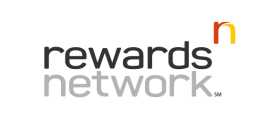Today’s operating landscape is dynamic, and at its center sits the immutable power of payments.
The end of last year brought forth several macroeconomic uncertainties, from geopolitical risks to potential economic softening, but these anticipated challenges, and companies’ responses to them, have increasingly unfolded against a backdrop — and in many cases, a foreground embrace — of payments innovation.
That’s why, for the “What’s Next in Payments: What Happened in Q1 That Will Shape the Rest of the Year,” PYMNTS sat down with nine payments experts, executives and insiders to chat about the payment innovations, trends and themes that they and their organizations have been tracking during 2024’s first quarter, and what they see coming around the corner in Q2.
What we heard was threefold and focused on investing in technology while staying ahead of innovation; prioritizing security and risk management; and, above all, using payments strategies as a way for companies to return to growth mode.
Effectively Investing in Technology Means Staying Ahead of Innovation
The increasing digitization of payments, across all facets of the business landscape, has brought with it a wellspring of new opportunities for businesses and payment ecosystem players.
 Reflecting on Q1, Seth Perlman, global head of product at payment processor at i2c, told PYMNTS that while, “there’s plenty of other things for everyone to worry about, from regulation to various other trends on the macroeconomic side of things … those are often outside of your control. What you do with the technologies on the horizon is going to determine your success this year and next…”
Reflecting on Q1, Seth Perlman, global head of product at payment processor at i2c, told PYMNTS that while, “there’s plenty of other things for everyone to worry about, from regulation to various other trends on the macroeconomic side of things … those are often outside of your control. What you do with the technologies on the horizon is going to determine your success this year and next…”
Continuing that vein, Perlman emphasized the need to stay ahead of innovation. Looking ahead, he said, issuers have two opportunities. First, helping their cardholders participate in those seamless digital experience. Second, thinking about how credentials can be provisioned into digital wallets, including merchant-specific wallets. Connected devices offer particular greenfield opportunities for merchants and forward-thinking issuers to harness.
Embracing innovation amidst uncertainty was a constant theme that PYMNTS heard.
 “Digital has got to infuse and permeate everything,” Doug Brown, chief product officer of NCR Voyix Digital Banking, explained.
“Digital has got to infuse and permeate everything,” Doug Brown, chief product officer of NCR Voyix Digital Banking, explained.
Forward-thinking financial institutions, he said, are using digital channels, from mobile apps to social media, to reach customers — enabled by real-time data and real-time context that helps banking “feel newer” to customers as they explore budgeting, planning and saving.
Uncertainty is the order of the day, added Brown, and the old playbook no longer applies. As banks and credit unions compete for deposits and client loyalties, the “way to keep people in the fold is to embrace them and give them the tools and capabilities that help them understand and feel better about these things — in addition to ‘just’ transacting,” he said.
After all, resisting the temptation to pull back during challenging times can allow firms to seize opportunities for growth and efficiency they may have missed out on otherwise.
 Business customers are showing resilience thanks to continued investments in innovation, particularly in artificial intelligence and security, Shaunt Sarkissian, founder and CEO of AI-ID, explained to PYMNTS. On the other hand, consumer-facing businesses are facing challenges such as margin compression and increased costs, leading to more cautious spending.
Business customers are showing resilience thanks to continued investments in innovation, particularly in artificial intelligence and security, Shaunt Sarkissian, founder and CEO of AI-ID, explained to PYMNTS. On the other hand, consumer-facing businesses are facing challenges such as margin compression and increased costs, leading to more cautious spending.
“The closer your business is to the consumer, the more it could be under pressure,” Sarkissian said. “It is a tale of two customers.”
Tapping Payments Innovation and Modernization as a Key Growth Engine
 Amid marketplace fluctuations, businesses are turning to payment companies for solutions that enhance efficiency and digitization, Dean M. Leavitt, founder and CEO at Boost Payment Solutions, told PYMNTS.
Amid marketplace fluctuations, businesses are turning to payment companies for solutions that enhance efficiency and digitization, Dean M. Leavitt, founder and CEO at Boost Payment Solutions, told PYMNTS.
“It’s becoming more and more apparent to CFOs and other finance professionals, and again, to both buyers and suppliers, that they need to digitize payments,” Leavitt said. “They know if they could reduce, or redeploy, the cost of HR, if they can more generally automate payment processes, then they can reduce human error and get paid sooner.”
“There’s a lot of messiness around payments, particularly very large B2B payments that might house hundreds or thousands of invoices with hundreds of associated line-item details,” Leavitt added. “… Large enterprises on both the AP [accounts payable] and AR [accounts receivable] side are looking for ways to automate those processes, digitize them and reduce their cost as well.”
 “People are rewiring their businesses around payments,” Thredd CEO Jim McCarthy explained. “The winners in the future truly will understand that payments is at the middle of everything they do.”
“People are rewiring their businesses around payments,” Thredd CEO Jim McCarthy explained. “The winners in the future truly will understand that payments is at the middle of everything they do.”
 Peter Dougherty, president at payments orchestration solution provider Spreedly, told PYMNTS that what he’s hearing from client firms is that they’re looking beyond mere cost containment and are now getting into growth mode.
Peter Dougherty, president at payments orchestration solution provider Spreedly, told PYMNTS that what he’s hearing from client firms is that they’re looking beyond mere cost containment and are now getting into growth mode.
He said he believes this transition is supported by the operational excellence firms have had to cultivate over the past two years, much of which is a byproduct of navigating the pandemic and subsequent economic pressures.
Those pressures, he said, necessitate a new strategy for providing payment options and the ability to orchestrate them. In the post-pandemic, omnichannel, global world of commerce, Dougherty said, “success and failure happen in the fractions of a second” it takes to facilitate payment or approve it.
As Dougherty told PYMNTS, looking beyond the quarter that has just ended, “the payments — and the payments performance — remain a key part of your value proposition as a brand or as a platform.”
A 92% authorization rate versus a 93% authorization rate may not seem all that different, but that 1% rate can translate into hundreds of millions of dollars. Even premium brands can maintain their “premiumness” by offering payments optionality, Dougherty said.
 Galen Robbins, managing director and head of global merchant acquiring sales at Bank of America, told PYMNTS that the bank’s clients have been grappling with inflation and now are tasked with finding operational efficiencies from their payments and receivables operations. Better efficiencies, he said, lead to stronger cash flow management.
Galen Robbins, managing director and head of global merchant acquiring sales at Bank of America, told PYMNTS that the bank’s clients have been grappling with inflation and now are tasked with finding operational efficiencies from their payments and receivables operations. Better efficiencies, he said, lead to stronger cash flow management.
“When you sit down with the directors of payments at large healthcare institutions, they are asking the same things that their counterparts at consumer and retail companies are asking,” Robbins explained.
 As Steve Fusco, president at Rewards Network, told PYMNTS, “you’re more likely to have success by fulfilling a need that your customer already has.”
As Steve Fusco, president at Rewards Network, told PYMNTS, “you’re more likely to have success by fulfilling a need that your customer already has.”
And what bigger need exists than for a business to pay and be paid?
Winning the Long Game by Prioritizing Security and Risk Management
As the payments and business landscape continues to shift, prioritizing security and risk management is rapidly emerging as a key strategy for organizations to embrace if they want to ensure sustainable growth.
 “Compliance has traditionally been a cost center designed to avoid risk and ensure compliance,” Sovos CEO Kevin Akeroyd told PYMNTS. “It has not been a force for growth — but now, it’s turning that corner and it really can be a force for growth.”
“Compliance has traditionally been a cost center designed to avoid risk and ensure compliance,” Sovos CEO Kevin Akeroyd told PYMNTS. “It has not been a force for growth — but now, it’s turning that corner and it really can be a force for growth.”
The more global markets a business enters, the more valuable a single, centralized compliance and indirect tax reporting solution and system of record can be, he said.
“Operational disruptions have never been higher … but speaking through the lenses of the CFO and CIO at a large company, everyone is bullish on being aggressive in the right ways,” Akeroyd said.
Looking back at Q1, Thredd’s McCarthy stressed the importance of risk management and compliance in an environment marked by heightened regulatory oversight, particularly in areas like anti-money laundering and know your customer/know your business protocols.
As AI-ID’s Sarkissian explained, the return of a flight to quality also underscores the need for companies to prioritize customer authentication methods and KYC processes, using technology to enhance fraud prevention and risk management strategies.
“Identity is the new currency,” Sarkissian said. “It may not be new news, but it is becoming very critical — and companies need to get very aggressive and reinvest in their customer authentication methods and KYC programs.”
 Reflecting on Q1,
Reflecting on Q1,  “
“ Business customers are showing resilience thanks to continued investments in innovation, particularly in
Business customers are showing resilience thanks to continued investments in innovation, particularly in  Amid marketplace fluctuations, businesses are turning to payment companies for solutions that enhance efficiency and
Amid marketplace fluctuations, businesses are turning to payment companies for solutions that enhance efficiency and  “People are rewiring their
“People are rewiring their 

 As
As  “
“